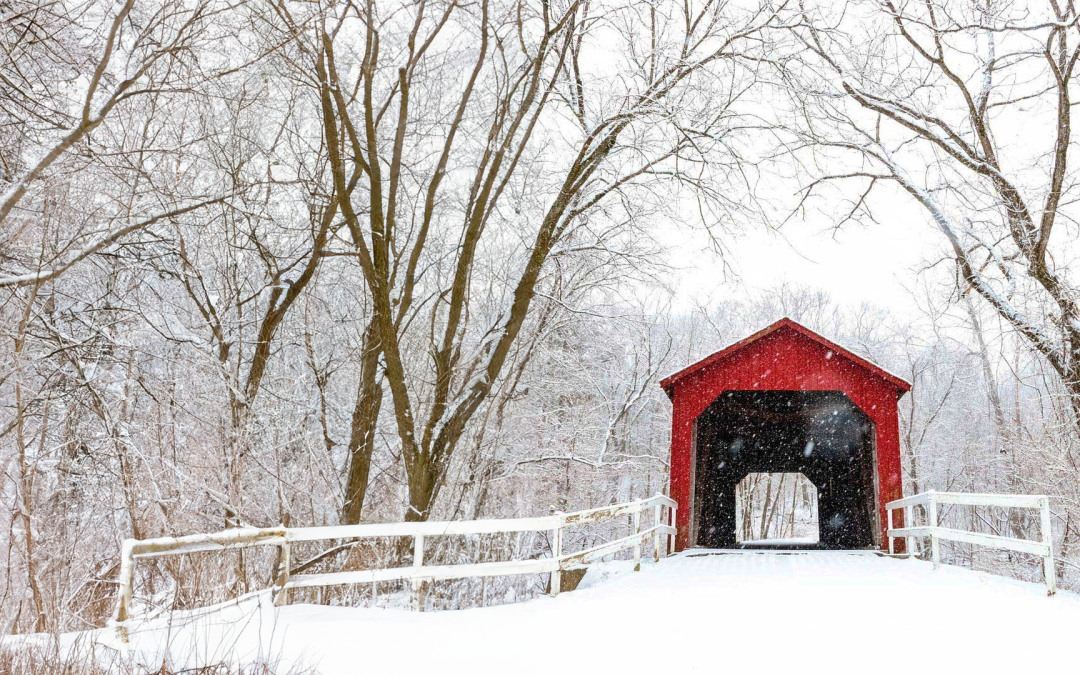Missouri’s Sandy Creek Covered Bridge, located in Hillsboro, is seen framed by winter snow. (Image courtesy of Facebook)
September 2024
Cover Story
A bridge to another time
Covered bridges still stir up our nostalgia
by Corbin Crable
The covered bridge
The covered bridge evokes visions of a lazy Sunday afternoon drive through an idyllic countryside. But the covered bridge is an increasingly rare attraction, much like so many of the tiny towns to which they stand as gateways.
A vanishing treasure
By the arrival of the 21st century, only one in 10 American covered bridges have survived – though, if built well, they can last up to 100 years. The primary culprit, of course, is the cost to maintain and restore them. Still, their history and their stories are being kept alive by the people and institutions around them, making them beautiful, historic pieces of engineering.
According to Iowa State University’s Institute for Transportation, more than 9,000 covered bridges in the U.S. have been lost since the earliest-known construction date of 1800.
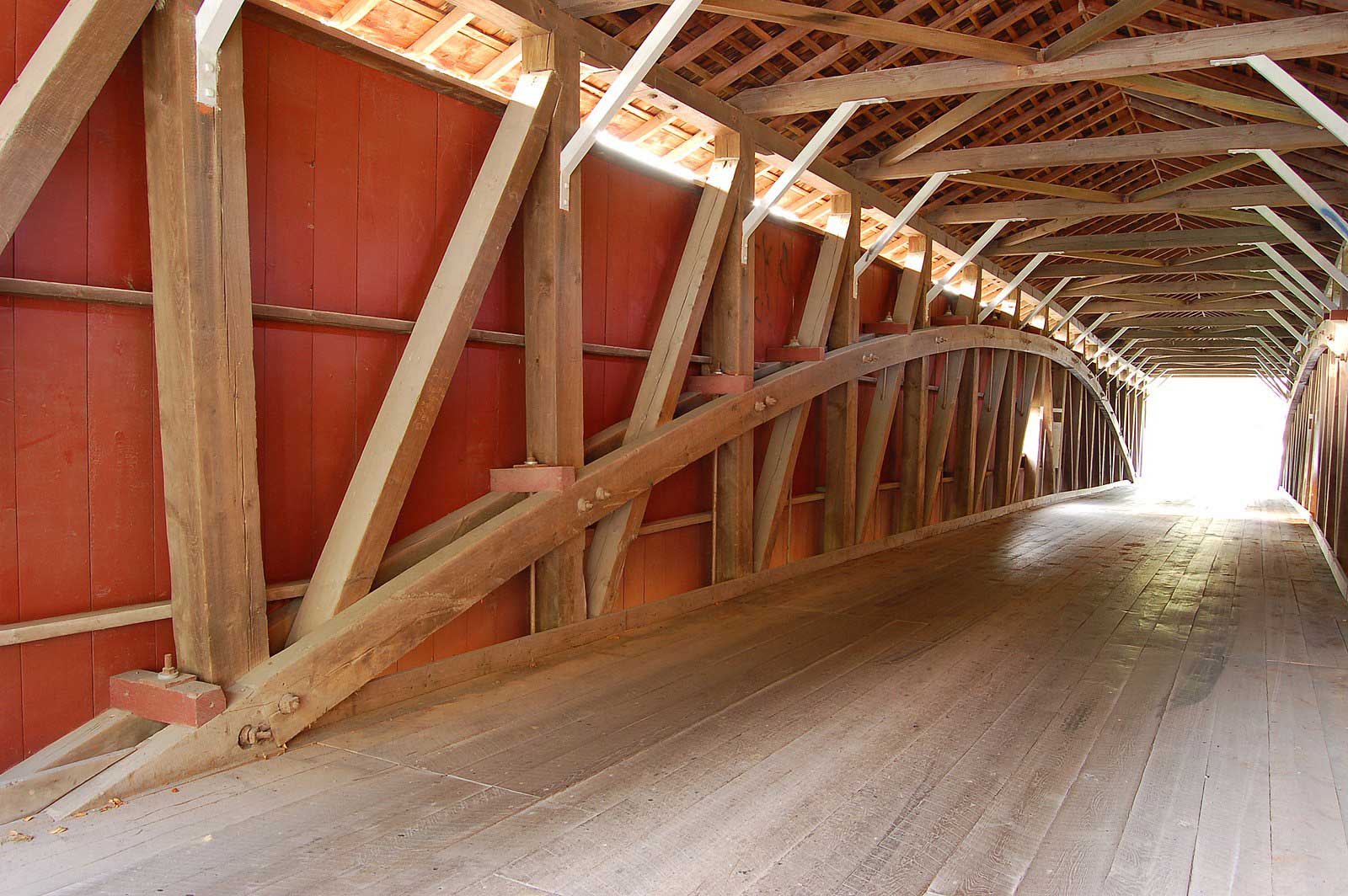
The Burr Arch Truss design
The Burr Arch Truss design is one of the most common in covered bridges. (Image courtesy of Wikimedia Commons)
And, according to The National Society for the Preservation of Covered Bridges’ website, many reasons exist for the advent of these structures, including “providing shelter during inclement weather or so horses wouldn’t be afraid to cross the water. However, the real reason is to protect the structure supporting the bridge. Without protection from the weather, the wooden timbers supporting the bridge would decay and eventually collapse. By keeping them dry, they will last much longer.”
The oldest surviving covered bridge in the U.S. was built in 1825 in Cooperstown, NY, while the longest American bridge is relatively new – built in 2008 in Ashtabula County, OH, it spans 613 feet. Speaking of Ohio, it’s the state with the second most covered bridges, with 148. The top spot can be claimed by Pennsylvania, which has 213.
A blog post on the website of Kansas-based Kaw Valley Engineering says the design of such bridges is simple.
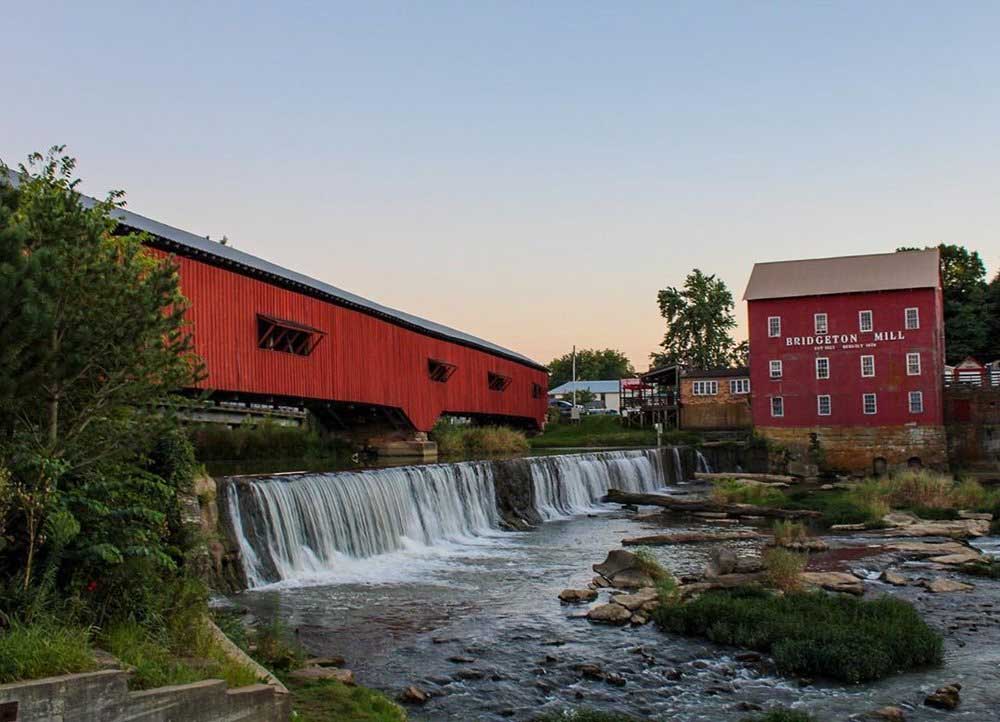
Bridgeton Bridge
Bridgeton Bridge, built in 1868 in Bridgeton, IN, is part of the city’s historic district and also includes the Bridgeton Mill. (Image courtesy of bridgetonmill.net)
Paint it red for safety, longevity
“Typically, the bridge is a combination of an arch for its load bearing capabilities and truss for rigidity. Patented in 1817, the Burr Arch Truss is the most common design for a covered bridge,” Kaw Valley Engineering’s post explains. “Looking at the historical bridges, you will notice something in common with many covered bridges – the color! Most bridges were painted ‘barn red.’ It would be great to say this was for safety or longevity reasons. But it is simply a cost-cutting measure. Barns, bridges, and other wooden structures were typically painted red in the 1800s because it was cheap to make. All three ingredients were readily available: milk, rust, and lime.”
Though they’re exceedingly rare to view in person, covered bridges appear in pop culture quite a bit – most notably in the critically acclaimed 1995 film “The Bridges of Madison County,” starring Clint Eastwood and Meryl Streep, based on the 1992 novel of the same name.
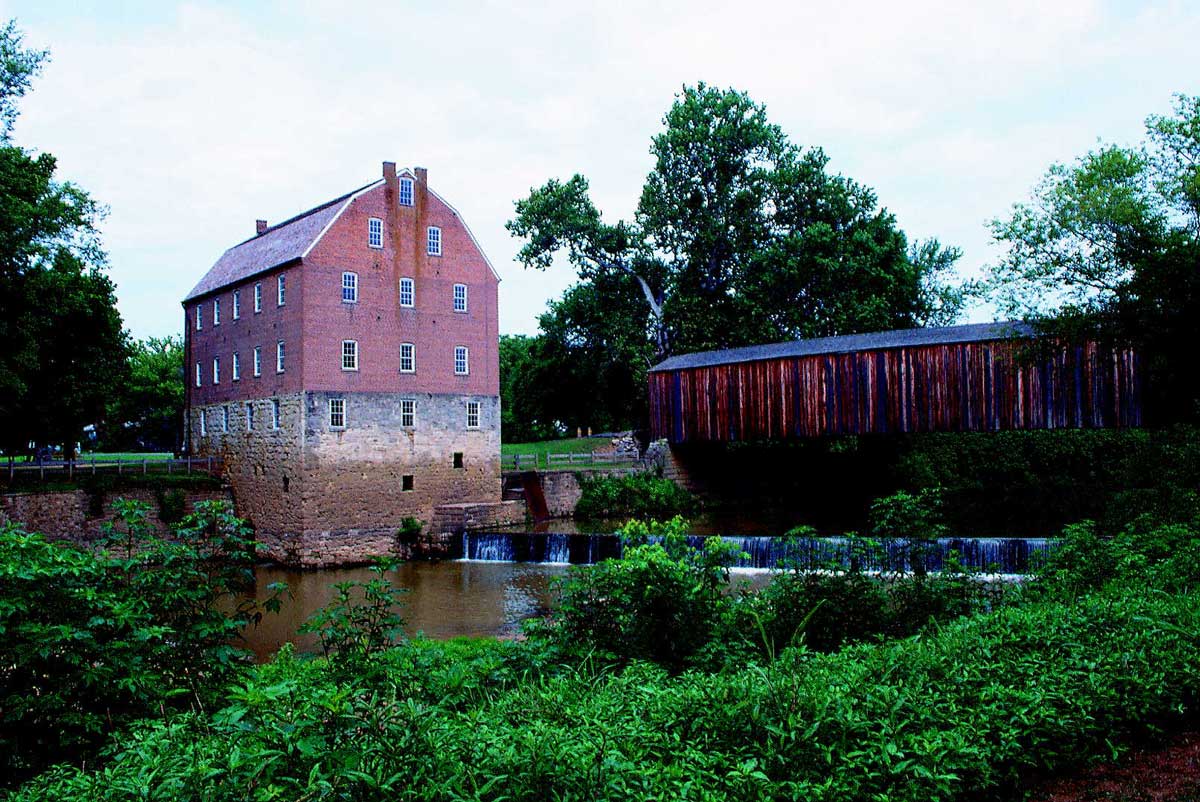
Missouri’s Burfordville Covered Bridge
Missouri’s Burfordville Covered Bridge, built in 1858, is the oldest surviving covered bridge in the state. (Image courtesy of Missouri State Parks)
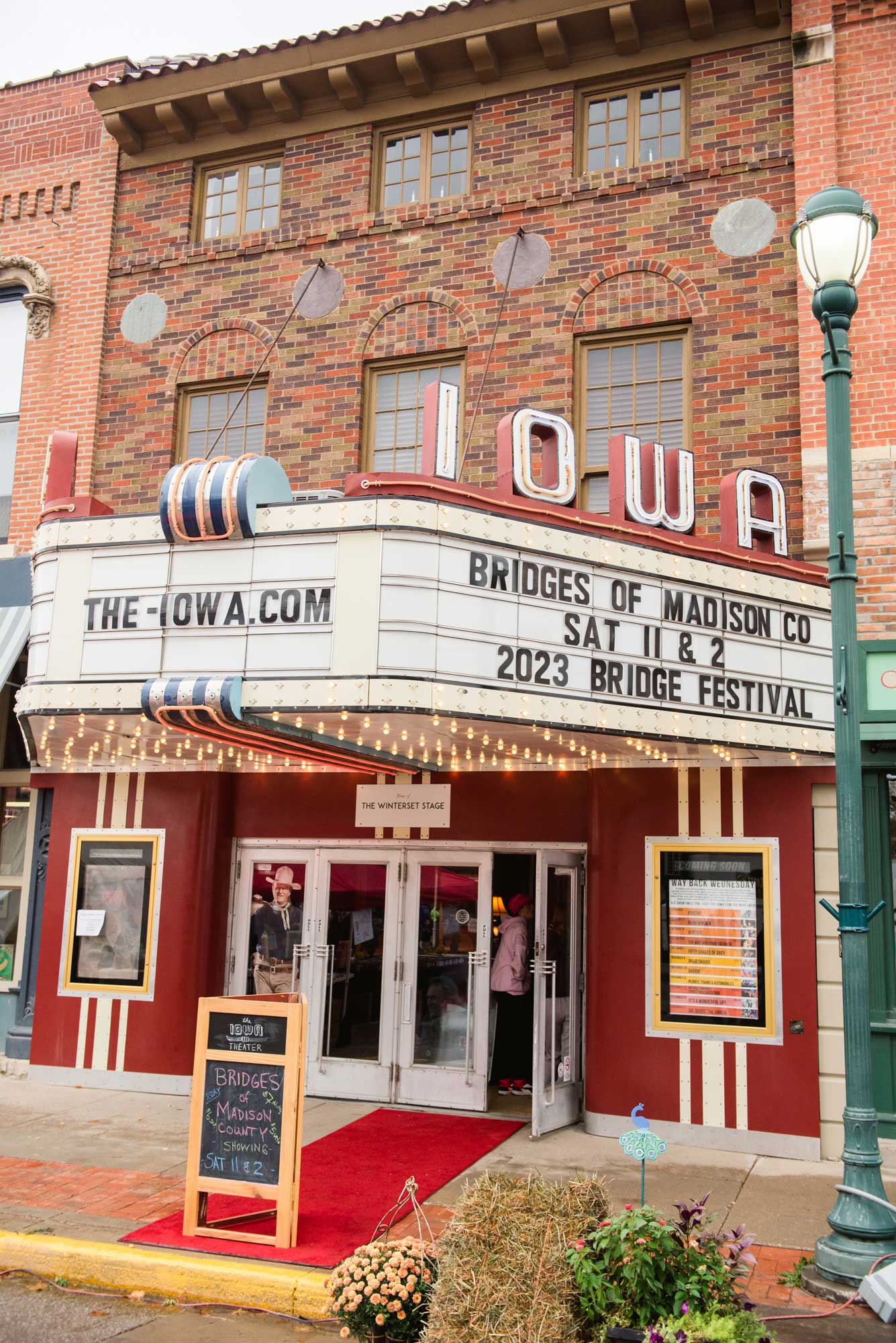
“The Bridges of Madison County”
What would Iowa’s annual Covered Bridge Festival be without a screening of “The Bridges of Madison County”? It’s included every year. (Image courtesy of Facebook)
Filmed in Madison County, Iowa’s town of Winterset
Filmed in Madison County, Iowa’s town of Winterset (also the birthplace of Western film icon John Wayne), “The Bridges of Madison County” tells the story of an Italian war bride who lives with her husband and children on a farm in Iowa. When a photographer for National Geographic comes to town to take pictures of the town’s iconic covered bridges, the two strike up a brief but passionate love affair (the book and film would later be adapted into a 2014 musical).
An annual celebration of the past
The real Madison County takes great pride in its storied history and the popularity of its covered bridges, hosting its annual Madison County Covered Bridge Festival. The event, which has taken place each autumn since 1970, features craft demonstrations; food, arts and crafts vendors; live music; an antique car show; and a parade, among other activities. This year’s festival takes place Oct. 12-13 at the Winterset Courthouse Square. In addition, attendees can take bus tours of each of the county’s covered bridges, as well as a stop at a historic schoolhouse.
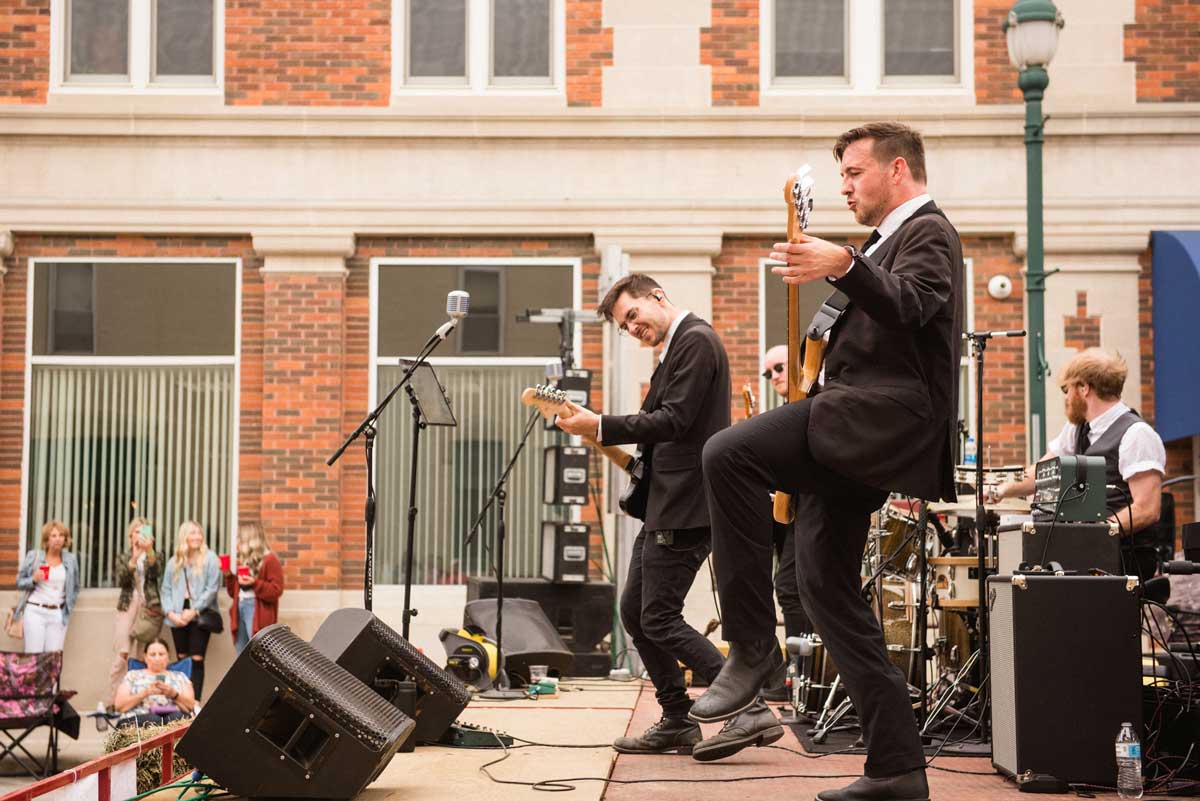
Madison County’s annual Covered Bridge Festival
Madison County’s annual Covered Bridge Festival brings live music, food, vendors, and history together every autumn. (Image courtesy of traveliowa.com)
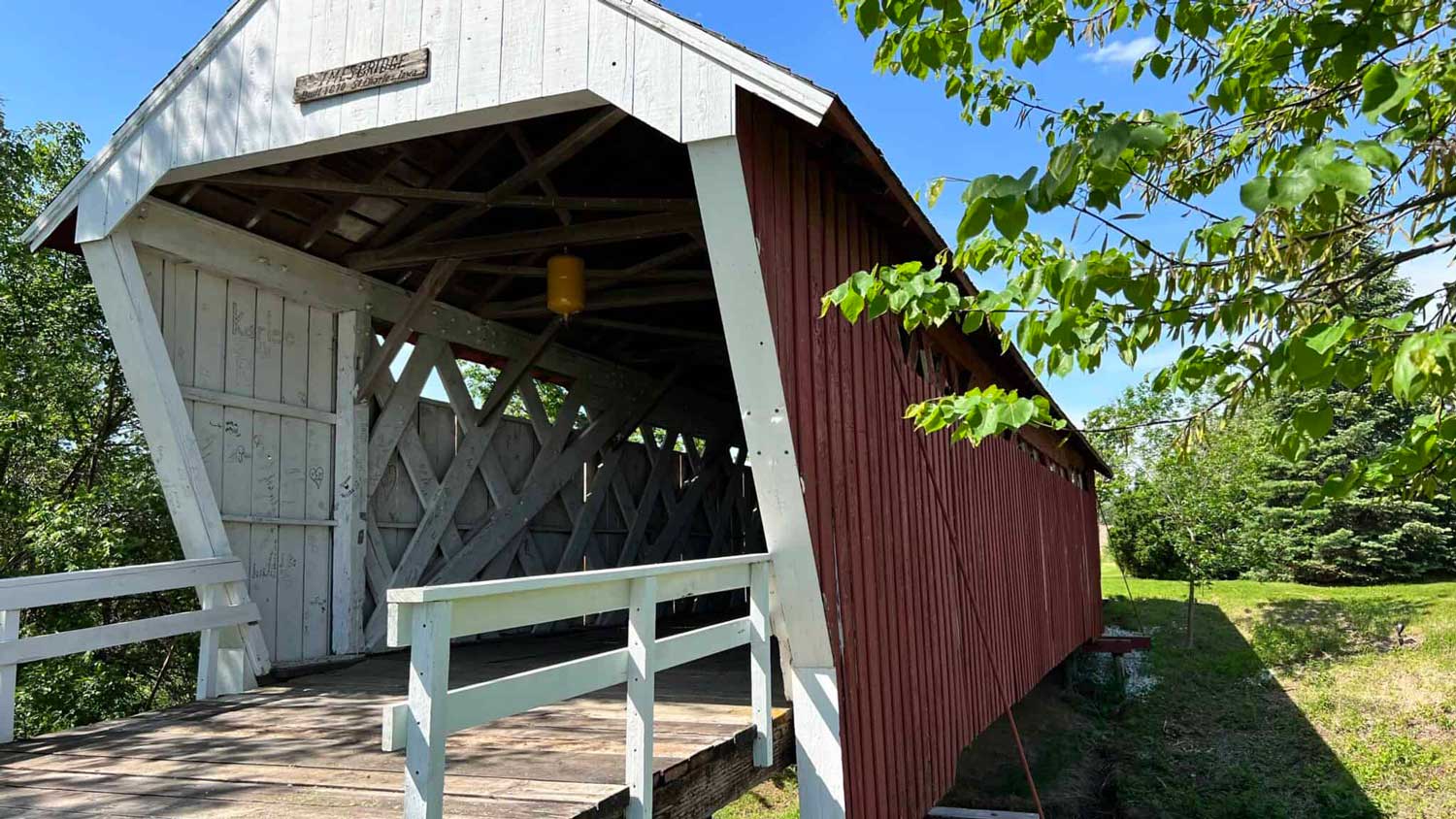
Cedar Covered Bridge
One of the most well-known covered bridges, the Cedar Covered Bridge, was featured heavily in the 1995 film “The Bridges of Madison County.” The original bridge was destroyed by arson in 2002, as was a replica built in its place in 2017. That one, too, was destroyed, and the current bridge was built to replace it in 2019. It is the only remaining covered bridge in Iowa’s Madison County that is still open to vehicular traffic. (Image courtesy of Madison County, IA, Tourism)
Past participants in the festival say they enjoy the festival’s small-town charm and the local historical perspective it provides.
“We love the small town feel to Winterset on festival weekend. The town square becomes the hub with a lovely selection of street vendors and shops,” one Facebook user wrote on the festival’s page earlier this summer. “We enjoy visiting the covered bridges, but mostly we have enjoyed how the local community have welcomed us into their family and we have made lifetime friendships.”
Another user wrote, “Can’t wait to roam the countryside again, checking out the bridges, making new friends, and eating good food!”
Events like Winterset’s festival keep alive the memory of the covered bridges that represented a simpler time. It’s a time, according to blogger Linda Hosler, we’ll never regain.
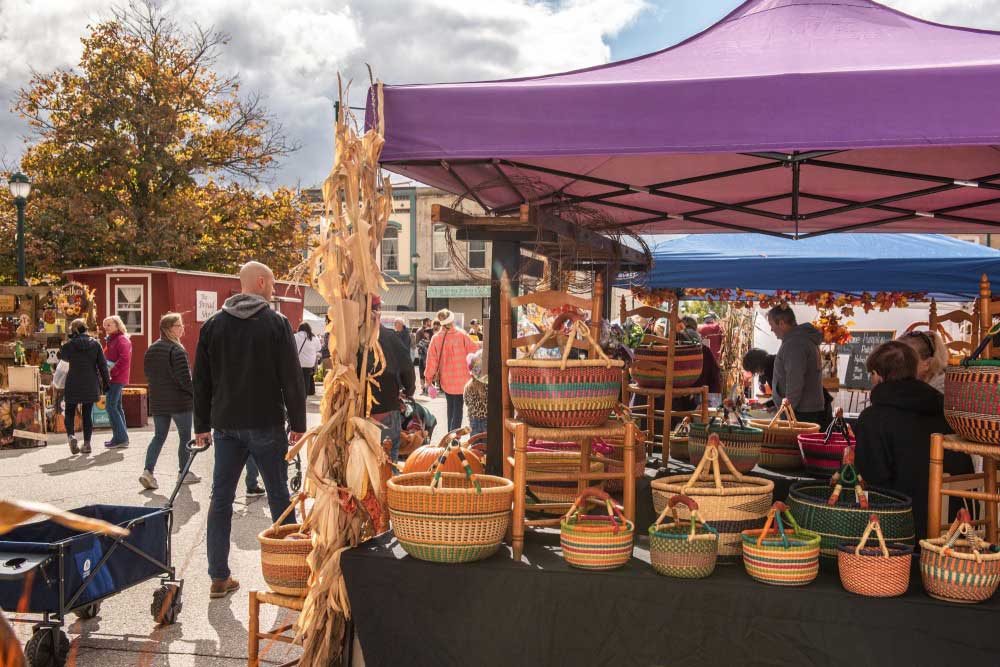
The Covered Bridge Festival, held in Winterset, IA
The Covered Bridge Festival, held in Winterset, IA, includes plenty of art and craft vendors. It has taken place each autumn since 1970. (Image courtesy of Madison County, IA, Tourism)
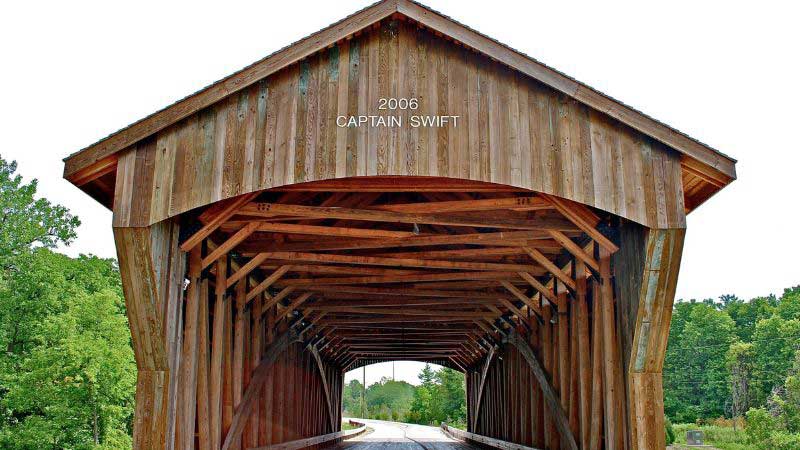
The Captain Swift Bridge in Princeton, IL
The Captain Swift Bridge in Princeton, IL, is the only two-lane covered bridge in Illinois. It was constructed in 2006. (Image courtesy of Princeton Tourism)
“Covered bridges are a huge part of America’s history and bring back good memories of a time when life was simple and carefree. Covered bridges certainly create an urban country picture like nothing else,” Hosler wrote in a 2023 entry on her blog History Lovers’ Corner. “A picture of a covered bridge in winter covered with snow and an icy creek beneath it seems to make me want to sing the song ‘Over the River and Through the Woods to Grandmother’s House We Go.’ A horse-drawn sleigh completes the picture. And in the fall, a covered bridge makes a beautiful picture with colorful foliage surrounding it and water rushing underneath it. We can only wish we still had the opportunity to go on just one sleigh ride over the old covered bridge now, because it is an era that is pretty much gone forever.”


